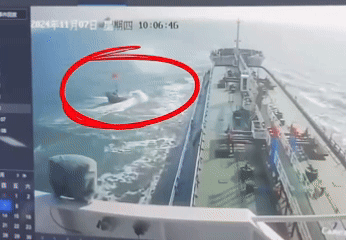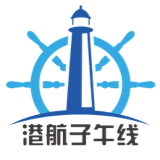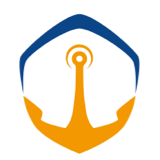Two Cargo Ships Collide at the Yangtze River Estuary! “get ahead of the vessel” Claims No Scientific Basis 最新!长江口两货船相撞!“抢船头”吃穿不愁?没有科学依据
 Image Credit: The Internet, a photo depicting an incident where an oil tanker capsized a fishing vessel
Image Credit: The Internet, a photo depicting an incident where an oil tanker capsized a fishing vessel
图片源于网络,为油船将放网渔船带侧翻事故图
Last night around 10 PM on December 30, two flag of convenience vessels flagged near No. 39 buoy in the northern channel of the Yangtze River.
昨天(12月30日)晚上十点左右,两条方便旗船舶在中国长江北槽No.39号浮附近相撞。
According to the AIS trajectory information of the two ships, one was an import vessel and the other an export vessel. The trajectory data indicated that the export vessel made a left turn before the collision occurred.
根据两船的AIS轨迹信息显示,事故相撞的两艘船中一艘为进口船,一艘为出口船。根据两船的轨迹信息显示,出口船在事故发生前有左转向的行为。
Preliminary reports indicate that the imported ship struck the fifth hold on the starboard side of the export vessel, causing damage to its fuel tank. Currently, there is no confirmed information regarding casualties or oil leaks, and we await further announcements from officials.
据初步报道,该艘进口船在事故中撞击了另一艘出口船的右舷第五舱,导致其油舱受损。目前尚无人员伤亡和漏油情况的确切信息,等待官方的进一步通报。
At present, the two vessels have been escorted by several tugs and have arrived at Baoshan North Anchorage and Hengsha East Anchorage respectively.
目前两艘船已经在多艘拖轮的护送下分别抵达宝山北锚地和横沙东锚地。
The water conditions in the Yangtze River area are complex, and accidents are frequent, especially with the arrival of winter, as the water levels along the Yangtze River trunk line continue to decline, leading to overall poorer navigation conditions and increased risks of grounding and stranding.
长江领域水况复杂,事故多发,尤其是随着冬季的到来,长江干线的水位持续下降,导致通航条件总体变差,船舶触礁、搁浅等事故风险随之增大。
Additionally, adverse weather conditions such as cold waves, strong winds, and poor visibility during autumn and winter can lead to a higher frequency of incidents, particularly in certain river sections where strong winds and waves increase the risk of collisions and sinking.
此外,秋冬季的寒潮、大风、能见度不良等恶劣气况易发多发,特别是在部分河段,大风浪的出现使得船舶碰撞、自沉等险情事故的风险进一步增加。
Frequent Incidents in the Yangtze River Area
长江领域事故频发
Ship Collisions
船舶碰撞
On December 30, 2023, a vessel crossing the Yangtze River from south to north collided with another cargo ship heading downstream. The accident caused damage to the left side of the cargo ship, resulting in water ingress, while the bow of the vessel was dented and deformed.
2023年12月30日,一艘轮船在长江某水域由南向北横越过程中与下行的另一艘货轮发生碰撞。事故造成货轮左舷船体破损进水,轮船球鼻艏部分凹陷变形。
Grounding Incidents
船舶搁浅
On December 13, 2023, a fleet sailing upstream in a certain area of the Yangtze River ran aground because the on-duty helmsman failed to consider the influence of the river's flow on the heavily loaded fleet, leading to a deviation from the navigation channel and eventual grounding.
2023年12月13日,一船队上行至长江某水域时,由于当班驾驶员未考虑弯曲河段水势流态对重载船队的影响,盲目贪缓,未及早挂高船位,导致船队逐步向航道外偏离并最终搁浅。
Ship Contacts
船舶触碰
On December 5, 2022, a vessel that had finished loading and was leaving the dock made contact with an obstruction in the water nearby. The crew did not detect the anomaly in time, and while navigating in a certain area of the Yangtze River, the bow of the ship took on water and ultimately sank.
2022年12月5日,一艘轮船载货完毕、离开码头时触碰附近碍航物,船员未及时发现异常,航经长江某水域时,船艏进水后沉没。
Ship Sinking Incidents
船舶自沉
On December 20, 2023, a vessel sailing in a certain area of the Yangtze River encountered strong winds but chose to take a risk and proceeded without taking preventive measures. Affected by the wind, the waves increased in size, causing the bow of the vessel to be swamped, leading to sinking in the anchorage area. Two people on board fell overboard but were rescued.
2023年12月20日,一轮船航行至长江某水域时遭遇大风,未采取防范措施选择冒险开航,受风流影响,涌浪变大,该轮船首上浪,江水灌入货舱,在锚区内发生自沉,船上2人落水后被救起。
Fire/Explosion Incidents
火灾/爆炸事故
On December 21, 2023, a South Korean vessel sailing in a certain area of the Yangtze River did not conduct a proper inerting procedure during unloading from the last voyage, which caused explosive gases to accumulate in the cargo hold and surrounding areas. This situation was exacerbated by the vessel using plastic hoses to collect residual liquids, creating static sparks that resulted in an explosion, severely damaging the cargo hold area and the living quarters, injuring three people.
2023年12月21日,韩国籍船舶航行至长江某水域时,在上一航次卸货时未惰化、卸货完成时即开舱验舱,导致货舱及舱口周围存在空气与苯蒸汽混合的爆炸性气体,加之该轮违规使用塑料软管收集残液,产生静电火花并引发爆炸。事故造成该轮货舱区域严重受损、生活区部分损坏、3人受伤。
In addition to these common incidents, collisions between cargo ships and fishing vessels should also be a matter of concern.
除了这些常见的事故以外。货船与渔船间的事故也应引起重视。
Recently, a video circulated online showing an oil tanker capsizing a fishing boat while it was deploying its nets. The playback from the monitoring system of the tanker indicated that this incident occurred on the morning of November 7, 2024. The tanker was navigating normally in the channel, but as it approached a small fishing boat on its starboard side that was deploying nets, the tanker attempted a hard right turn to avoid it. However, due to the short closest point of approach, the bow of the tanker caught the fishing net, causing the fishing boat to capsize due to the tanker’s speed.
近日,网上流传一段关于油船将放网渔船带侧翻的视频。根据该船舶监控系统回放显示,该事件发生在2024年11月7日上午,油船在航道正常航行,船首右侧有一艘小渔船正在放网,于是油船采取右满舵避让的措施,但是由于抵达最近会遇点的时间过短,船头挂到了渔网,由于油船速度较快,将渔船拉侧翻。
To prevent collisions between fishing boats and cargo ships, fishing vessels should pay attention to the following points:
为了避免渔船与货船的事故的发生,渔船要注意以下几点:
- Fishing vessels must not anchor or operate in the navigation channel. 1.渔船不得在航道内停泊作业。
According to Article 47, Paragraph 1 of the Maritime Traffic Safety Law: Vessels must anchor at docks, berths, loading and unloading stations, and anchorage areas that meet safety conditions. Anchoring must not endanger the safety of other vessels or offshore facilities.
根据《海上交通安全法》第四十七条第一款:船舶应当在符合安全条件的码头、泊位、装卸站、锚地、安全作业区停泊。船舶停泊不得危及其他船舶、海上设施的安全。
- Legal operating areas are required. 2.合法作业区域。
Before heading out to sea, fishermen need to apply for fishing vessel registration and filing in accordance with relevant regulations. Registration and filing include basic information registration of the fishing vessel, crew member information registration, and vessel inspection filing. Only with valid registration certificates and filing documents can fishing vessels legally operate at sea. Fishing vessels must comply with regulations and operate only within legal fishing areas. Entry into prohibited fishing zones and protected areas, as well as illegal fishing practices that infringe upon fishery resources, are strictly prohibited.
渔船出海前,渔民需要按照相关规定申请办理渔船登记和备案手续。登记和备案包括渔船基本信息登记、船员信息登记、船舶检验备案等。只有取得有效的登记证书和备案证明,渔船才能合法出海作业。渔船出海作业时,应遵守相关规定,只在合法的渔业作业海域进行作业。不得擅自进入禁渔区、保护区等限制区域。严禁非法捕捞等侵犯渔业资源的行为。
However, it is important to note that even legally operating fishing vessels may sometimes overlap with the navigation routes of cargo ships. To ensure safe navigation, cargo ships must also adhere to the International Regulations for Preventing Collisions at Sea when avoiding fishing vessels, maintain proper lookout, travel at a safe speed, accurately assess collision risks, and take evasive action well in advance. Cargo ships should give ample space and angle for avoidance. Additionally, if a cargo ship damages a fishing vessel's net while operating in a legal fishing area, it is obliged to compensate accordingly.
然而,渔船合法的作业区域可能会出现和货船航线重叠的情况,为了保证航运安全,货船在避让渔船时还应遵守《国际避碰规则》,保持正规了望,使用安全航速,正确判断碰撞危险,并及早地采取避让行动,大幅度地避让,宽裕地让足。另外,如果货船破坏合法作业的渔船的渔网,货船需要进行相应的赔偿。
In addition, there is a saying among coastal communities in China about "get ahead of the vessel" , claiming that "If you get ahead of the larger vessel, you’ll never have to worry about food and clothing." This notion clearly lacks scientific basis; it poses significant risks to navigation and may lead to a series of severe consequences, including collisions, traffic congestion, environmental pollution, economic losses, and legal liabilities. Therefore, adherence to navigational rules and safe operating practices is essential to ensure smooth and safe water traffic.**
除此之外,在中国沿海民间还流传着“抢船头”的说法,声称“抢过大船头,吃穿不用愁”。这种说法显然是没有科学依据的,它在船舶航行中极具风险,可能导致船舶碰撞、交通拥堵、环境污染、经济损失以及法律责任等一系列严重后果。因此遵守航行规则和安全操作至关重要,以确保水上交通的顺畅和安全。
Maritime safety is crucial for the sustainable development of the shipping industry. It requires comprehensive management in areas such as crew training, vessel maintenance, emergency preparedness, and environmental protection to ensure the safety of crew members, cargo, and the marine environment. By adhering to international regulations, adopting advanced technologies, and strengthening risk management, we can significantly reduce marine accidents and protect global marine resources.
海事安全是确保航运业可持续发展的关键,它要求船员培训、船舶维护、应急准备和环境保护等方面的综合管理,以保障船员生命、货物安全和海洋环境的清洁。通过遵守国际法规、采用先进技术和强化风险管理,我们可以显著降低海上事故,保护全球海洋资源。








